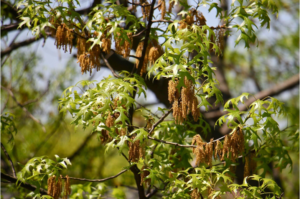
If you have allergies, you dread the coming of a new season because you know you are going to be met with itchy eyes, sneezing, coughing, and sinus headaches. If your allergies are severe enough, you may need to seek out professional sinus relief in Los Angeles.
Pollen is one of the most common triggers of seasonal allergies. As trees and plants begin to bloom, they release their pollen into the air, which can irritate the sinuses when they are breathed in.
Each spring, summer, and fall, these tiny grains of pollen cause allergic reactions in nearly 60 million Americans. Most of the pollens that cause these kinds of allergies are produced by trees, weeds, and grasses. There are a handful of plants that are the common culprits behind allergies. Our sinus doctors have listed them below.
Ragweed
Ragweed is a kind of grass that is the main cause of weed allergies. Ragweed can be a year-round irritant for those who live in warmer areas, but ragweed season is at its peak from late August all the way through October. If your allergies are the worst in the fall, you may be allergic to ragweed. Even the smallest amount can set off your symptoms.
Sagebrush
Sagebrush is another weed allergen that blooms just before fall, making you cough and sneeze just before it start to get cooler outside. Even if you pick a home away from any sagebrush plants, the wind can spread this allergen for miles.
If you suspect you have a sagebrush allergy, you undergo immunotherapy in Los Angeles to find out which pollen exactly you are allergic to.
Pigweed
Your runny nose and itchy eyes may be caused by pigweed, an annual herb that can grow up to 28 feet tall! This plant can be found growing along highways, in vacant lots, and in yards.
Peak season for this plant’s pollen shed is late summer to early fall. It thrives in full sun and dry conditions, making it a very common allergen in the Los Angeles area. Symptoms of a pigweed allergy include a runny nose, watering eyes, and sneezing.
Oak
Oak season typically occurs in mid-April, and it’s one of the biggest causes of springtime allergies. There are over 400 species of oak tree that naturally grow throughout the Northern hemisphere, and its pollen can drift miles at a time, making it nearly impossible to avoid.
If you have seasonal allergies, they are likely based on the pollen of one of the above plants. In addition to medication, you can try to lessen your allergy symptoms by showering after being outside, wiping off your shoes before entering the home, and using air purifiers.





